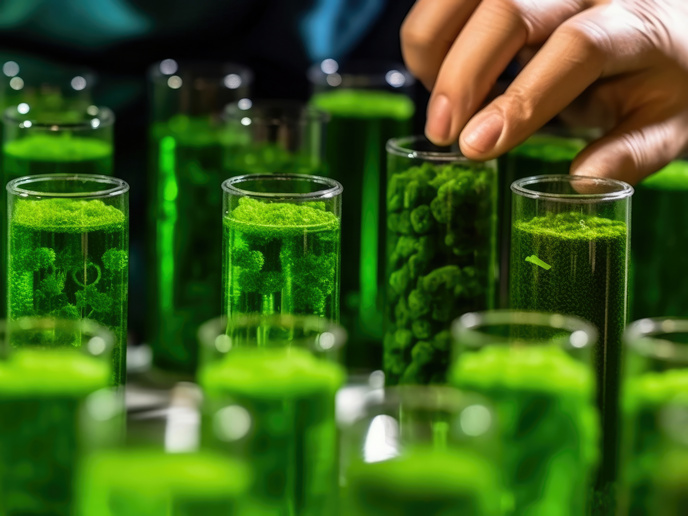Sustainable ingredients sourced from microalgae
Microalgae, one of the most ancient life forms on Earth, are a diverse family of microscopic mono and multicellular organisms. Their biological and chemical diversity has long been a source of interest to the pharmaceutical, cosmetic and nutritional supplement sectors, because of the unique bioactive molecules they contain. “Microalgae have unique adaptation abilities to various stress factors, such as light, salinity, pressure and temperature,” explains AlgaeCeuticals project coordinator Panagiotis Madesis from the Centre for Research and Technology Hellas in Greece. “To withstand such harsh conditions, they produce a variety of unique proteins, enzymes and metabolites. It is these molecules that are of interest to industry.” In addition, there is growing interest in microalgae as a sustainable source of nutrition. Many species are excellent sources of protein, vitamins and minerals. Harvesting microalgae biomass at scale could provide a renewable source of food for a growing global population.
How microalgae produce valuable compounds
The AlgaeCeuticals project sought to identify and promote promising cultivation methods that could enable industry to more fully exploit the potential of microalgae. The project was supported by the Marie Skłodowska-Curie Actions programme. “To achieve our aims, we used new cultivation methods at both the lab and industrial scale,” adds Madesis. “These included various ‘omics’ approaches, such as genomics, transcriptomics, metabolomics and proteomics, to understand the basic metabolic functions of microalgae.” Using these methodologies, Madesis and his team were able to better understand how microalgae grow, how they produce valuable compounds, and how these compounds can be extracted for industrial use. The team next attempted to produce higher yields of both biomass and valuable metabolites, specifically for sectors such as pharmaceuticals and cosmetics.
Industrial-scale algae-based production
The project achieved a number of breakthroughs, including a better understanding of how mycosporine-like amino acids are produced. These small, secondary metabolites are produced by microalgae that live in environments with high volumes of sunlight. This has opened up the potential of growing and extracting mycosporine-like amino acids to produce natural UV sunscreens. The project also identified ways of achieving large-scale microalgae production, for both biomass and specific metabolites. This could open the door to the industrial production of algae-based nutraceuticals for functional foods and food supplements, as well as skin repair enzymes. The project also succeeded in encouraging a great deal of knowledge exchange between academia and industry.
Identifying new high-value ingredients
Microalgae have long been recognised as an untapped source of useful compounds for a range of industrial uses – a challenge to date has been scaling up production efficiently. The AlgaeCeuticals project demonstrated that this is possible, and that microalgae can indeed be better exploited for high-value ingredients. In the immediate term, algae production businesses and the food and cosmetics industries stand to benefit from applying the processes pioneered in the AlgaeCeuticals project. “We now need to capitalise on the results we have obtained so far,” says Madesis. “This will be achieved through further research. New funding will enable us to investigate in greater depth high-value metabolites produced by microalgae, and also optimal growth conditions for biomass.” The continuation of this work could therefore lead to the discovery of new medicines and cosmetics, and further integrate microalgae into our food chain in a green and sustainable manner.
Keywords
AlgaeCeuticals, microalgae, pharmaceutical, cosmetics, genomics, protein, proteomics, medicines







